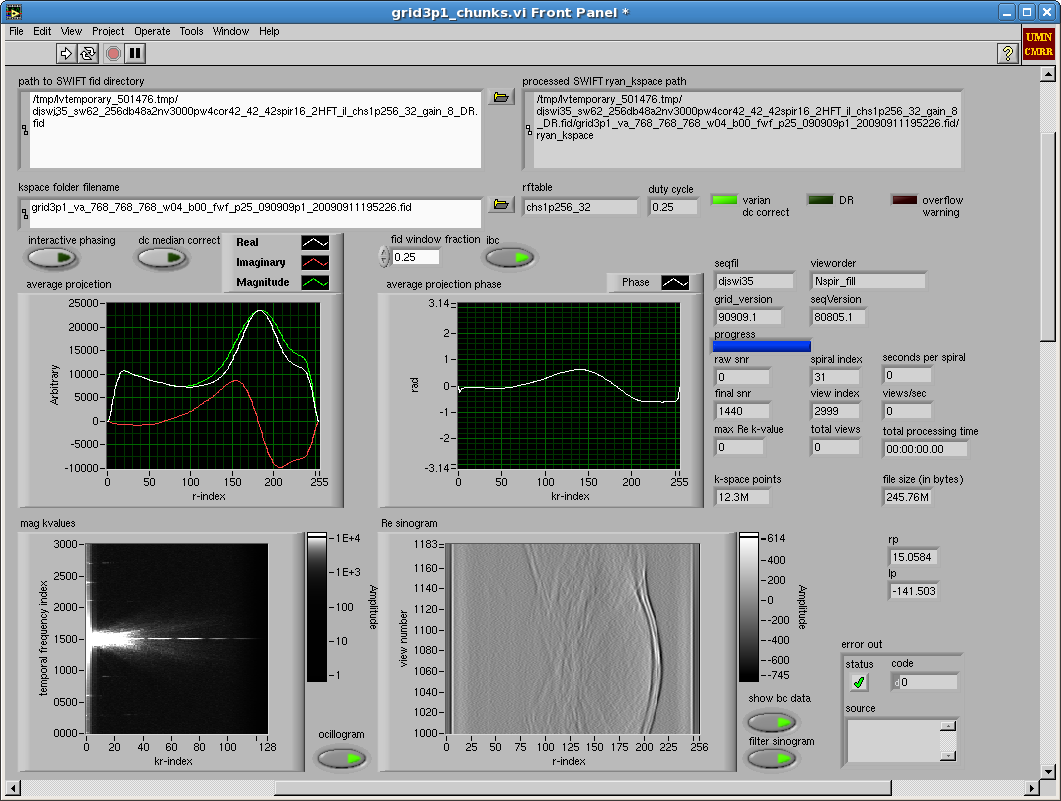From Friday, April 19th (11:00 PM CDT) through Saturday, April 20th (2:00 PM CDT), 2024, ni.com will undergo system upgrades that may result in temporary service interruption.
We appreciate your patience as we improve our online experience.
From Friday, April 19th (11:00 PM CDT) through Saturday, April 20th (2:00 PM CDT), 2024, ni.com will undergo system upgrades that may result in temporary service interruption.
We appreciate your patience as we improve our online experience.
09-08-2010 08:55 PM
Hi All,
There is another simple example in the book . Although it does not include backprojection filter, it is another good example for learning fan-beam tomograph reconstruction:

You could download the code in
http://www.informit.com/content/images/0130474150/CDContents/0130474150_CDContents.zip . And find this example under exercises\exercises\Chapter_2_ImageGeneration.zip\Chapter_2_ImageGeneration.
Maybe you could try to improve it by incorporating backprojection filters.
Thanks!
ZJ Gu
09-09-2010 06:54 AM
Years ago, I think I remember this was included in the LabVIEW examples. Because I know I have seen it before at some point
.....Don
09-09-2010 07:40 AM
rpursley8 wrote:
Here is an example (LV 8.6) that I have a slice of a 3-tube phantom. The backprojection filters are written in Mathscript so you need that toolkit to execute that part of the code. I placed that part of the code in a Diagram Disable Structure. The other frame has a constant that contains a Cosine filter. I also added a Wait function to the reconstruction loop so you can see the final image as it builds up.
Great work Rpursley8. The cosine filter is a reasonable default as a deconvolution filter. I think another approach that would not require mathscript would be use of the signal processing window functions included in LabVIEW applied to the FFT result. I slightly modified your example to show this for use of the LabVIEW general cosine window, but your cosine coefficients does a better deblurring job.
Don
09-10-2010 07:06 AM
Randall - I think you are right regarding the mis-application of the LabVIEW window functions for the frequency-based result because the FFT result is symmetric about 0 Hz and thus the filter must also be. But I wonder if there is a way to make these windows useful for this application. ZJ - can you comment on this?
Don
09-14-2010 02:29 AM
Hi Don and Randall,
Thanks for discussing about the window function ![]() I checked with all the window functions. It seems no function match such a application requirement. But we could apply such a window using a simple code segment:
I checked with all the window functions. It seems no function match such a application requirement. But we could apply such a window using a simple code segment:

09-15-2010 08:44 PM
Thanks ZJ - this strategy works very well and should allow us to experiment with other filters outside of mathscript.
Sincerely,
Don
01-10-2011 11:38 AM
HI ALL FRDS,
From can i get online data of sets of 2D image
02-22-2011 12:39 PM
Dear All,
I am encouraged to see some ongoing interest in tomographic image reconstruction and processing with LabvVIEW
I have had an interest in using LabVIEW for non-cartesian MRI (Magnetic Resonance Imaging) signal processing and image reconstruction (for about the last 5-10 years)
In my current application, raw data is aquired on an MRI scanner, or Digital Reciever (non-NI) attached to an MRI scanner and then processed in LabVIEW.
For 3-D or 4D (3D + time series data) I had used LabVIEW with a gridding reconstruction (interpolation and fourier transform) algortihm which is much faster than the 3D inverse radon transform.
Currently I use a command line call to compiled multi-threaded fortran code, but would like to call 64-bit linux shared libraries. This is to have large matrix sizes and shared memory. At the moment the biggest difficulty is that there is no (to my knowledge) 64-bit linux LabVIEW. Is anybody using a beta?
Anyway, it sounds like folks are interested in 2D radon transform. I do have some old code from grad school for this (implemented in LabVIEW). THere is the example code that has been pointed out. I have not used the MathScript version of the inverse radon transform, but am interested in folk's experiences...
Best,
Curt

02-22-2011 10:38 PM
Sir,
I am finding very hard for Developing Radon Transform and proceesing 2D image for improment of Image resolusion in labVIEW.Can u forward me some code related to CT imaging.
Thakns,
Pravin.
03-01-2011 09:38 AM
On my work I also collect the 3D MRI data with Labview. Tried to do the 3D filtered backprojection reconstruction on labview at first, but it
was quite impossible to debug the code. So I wrote a prototype with Matlab, and finally a C DLL for performance.